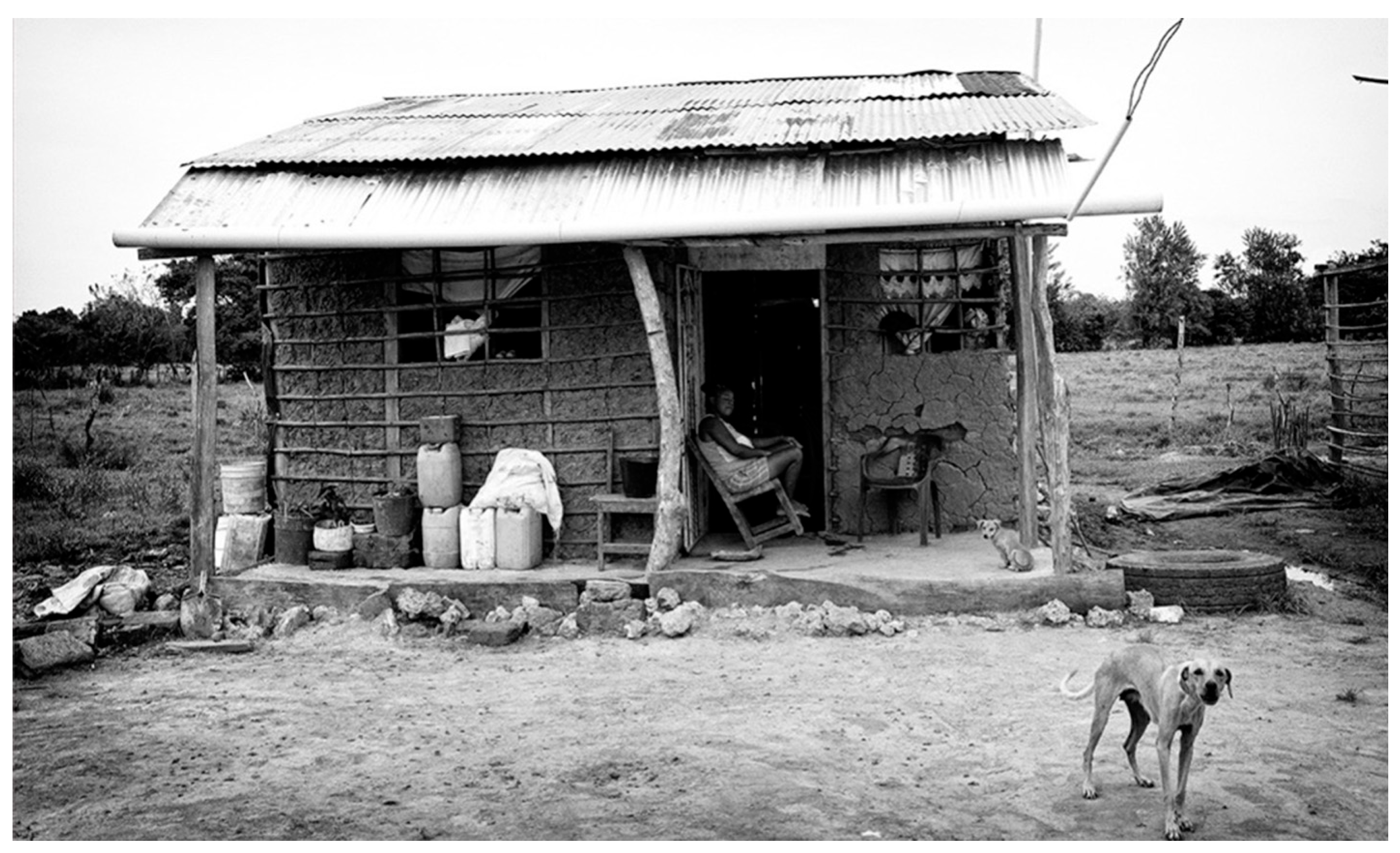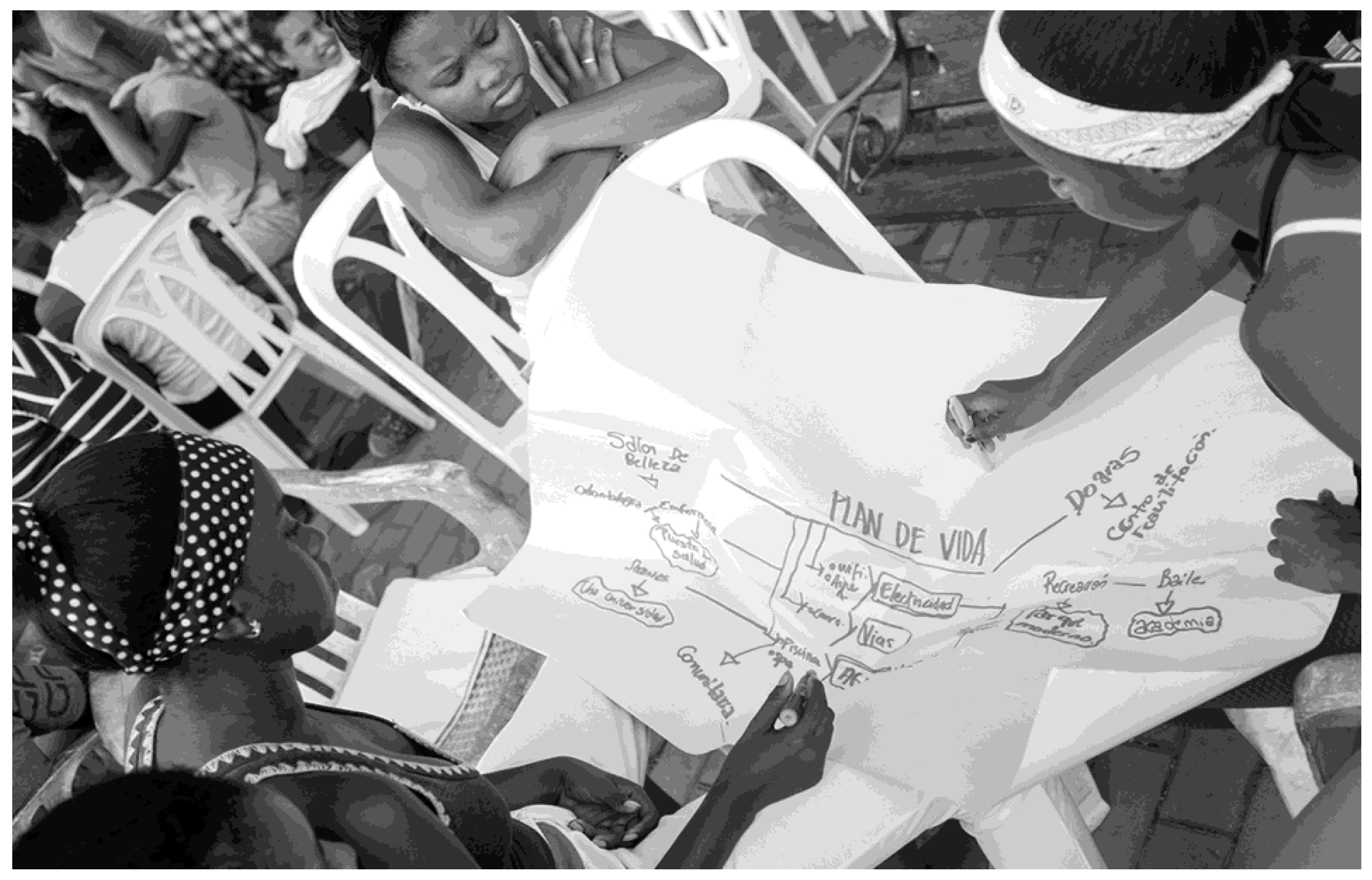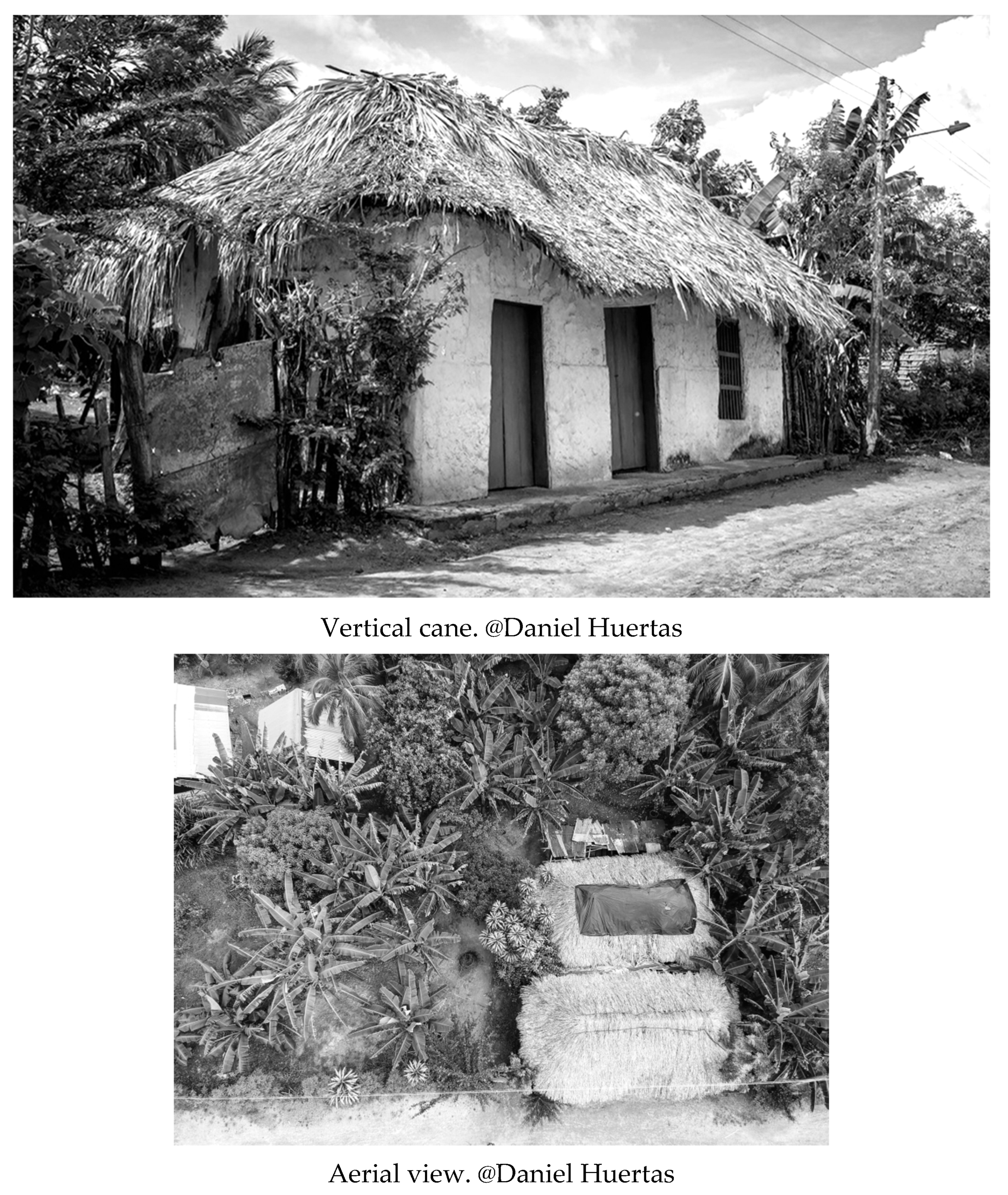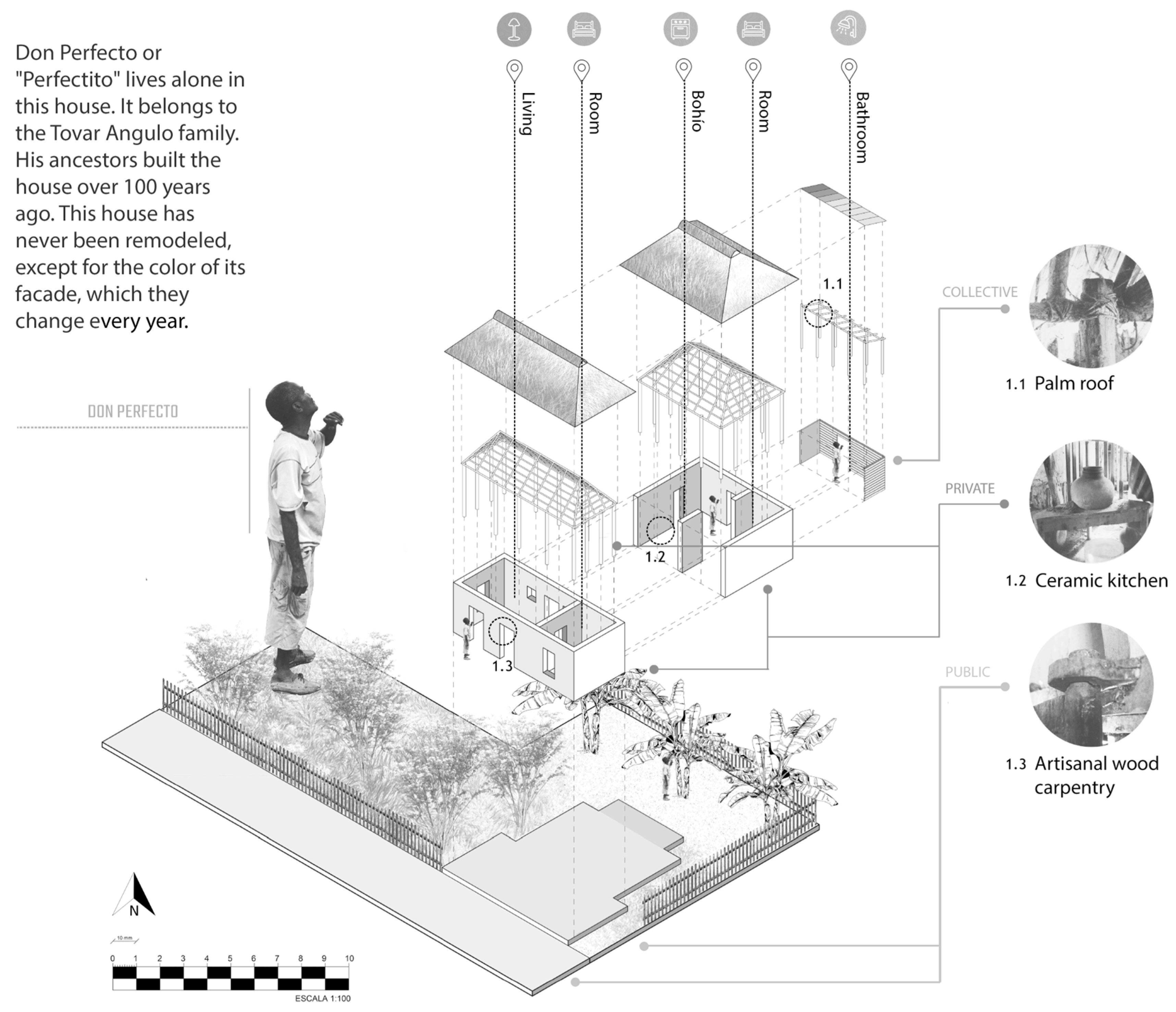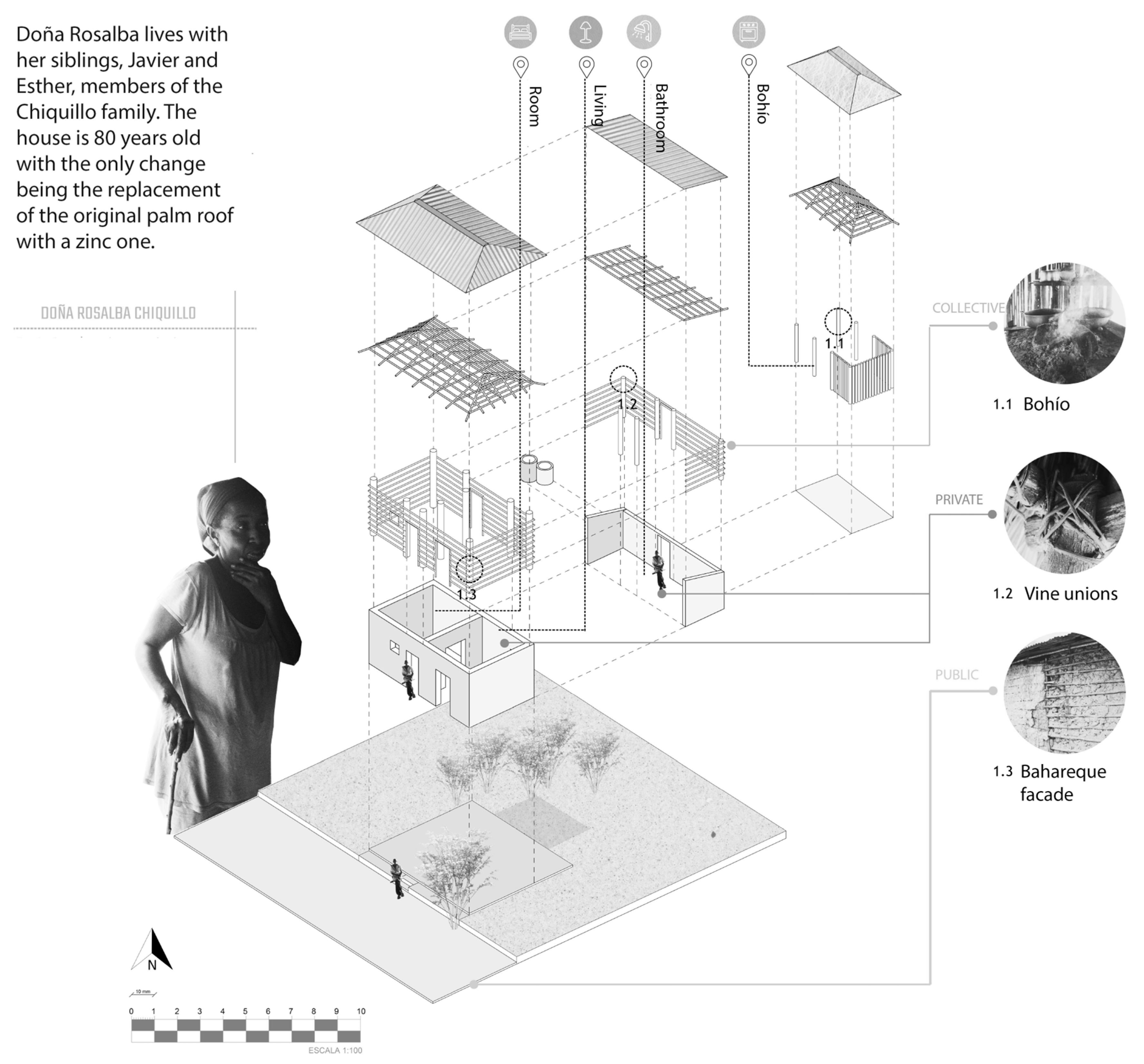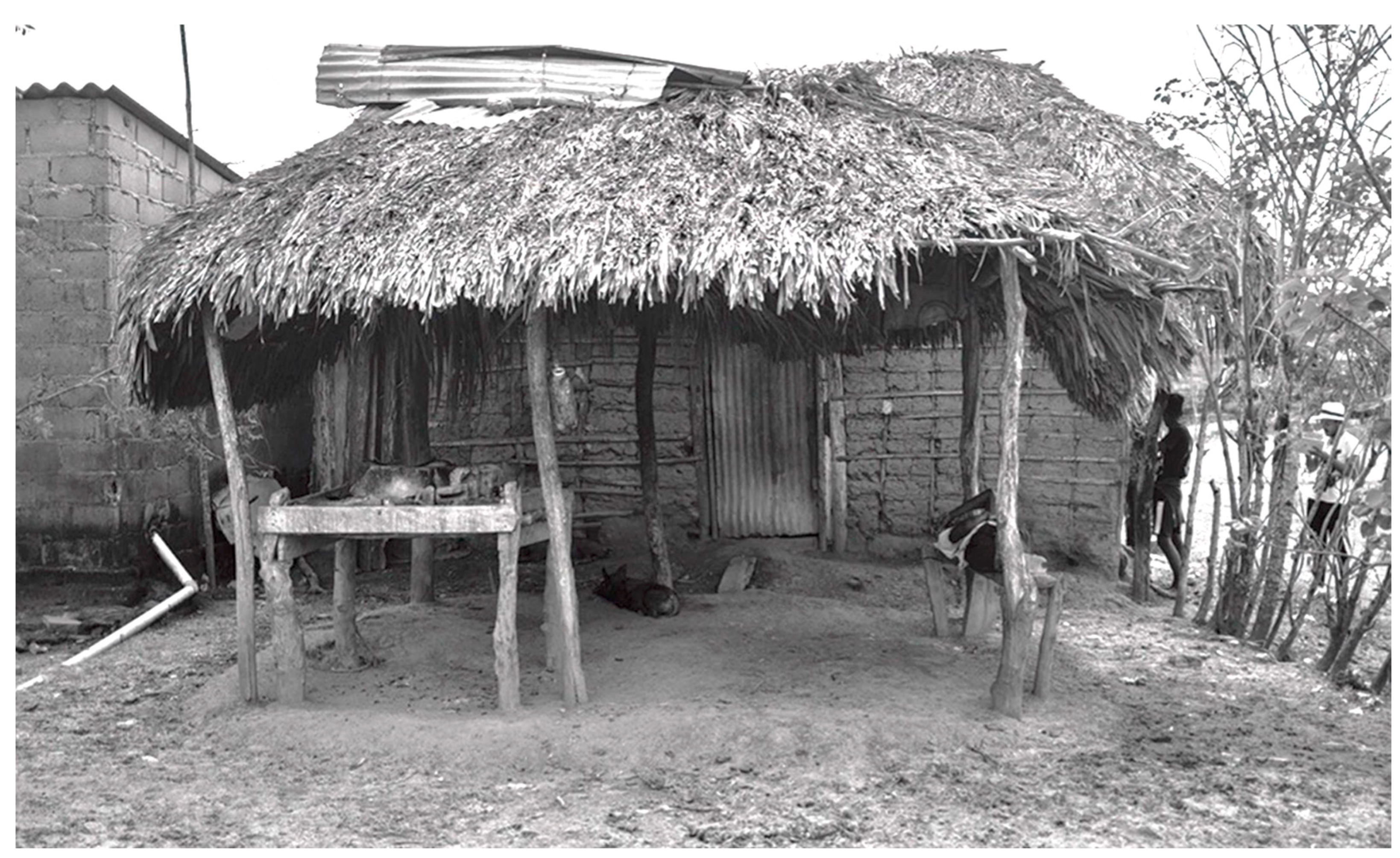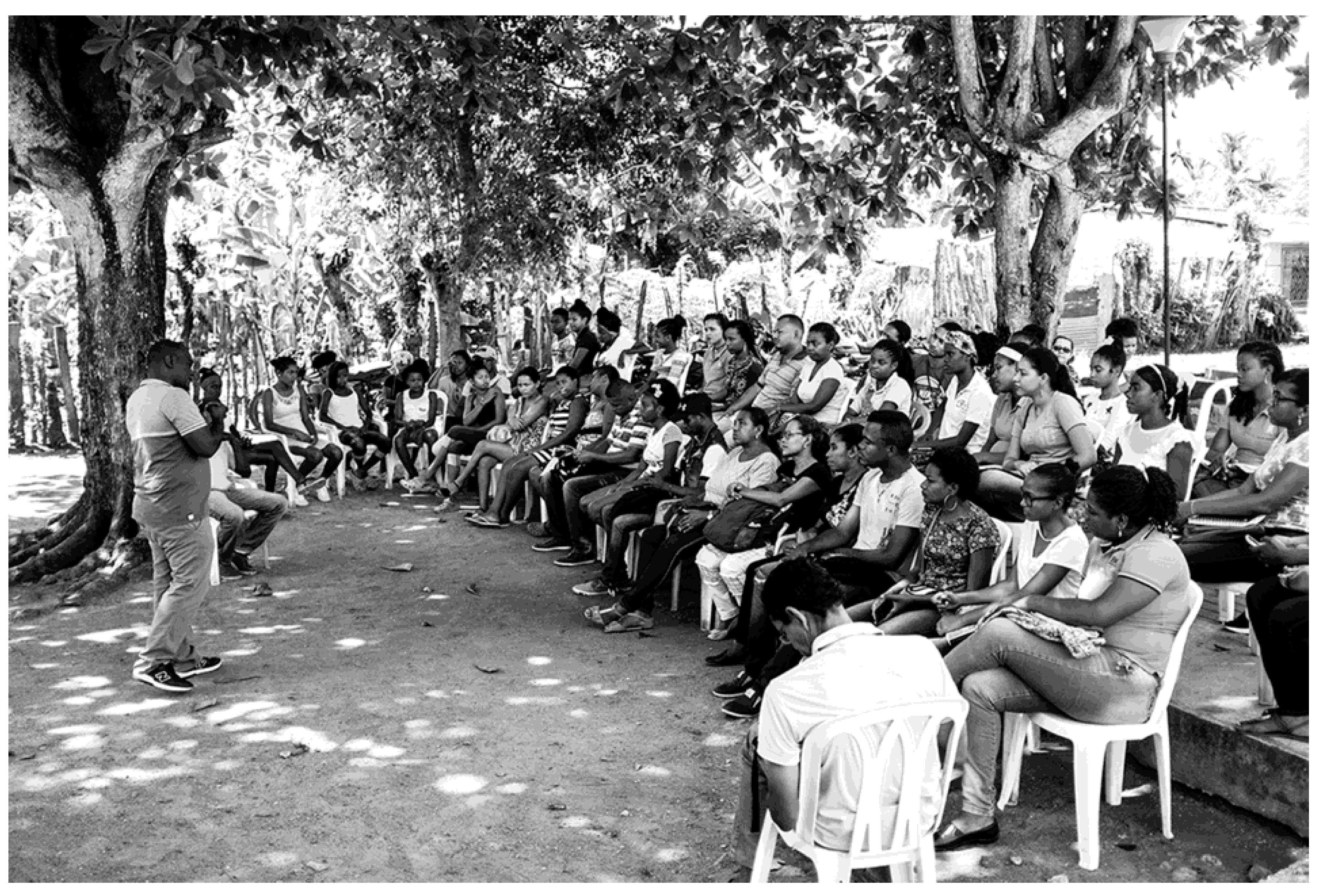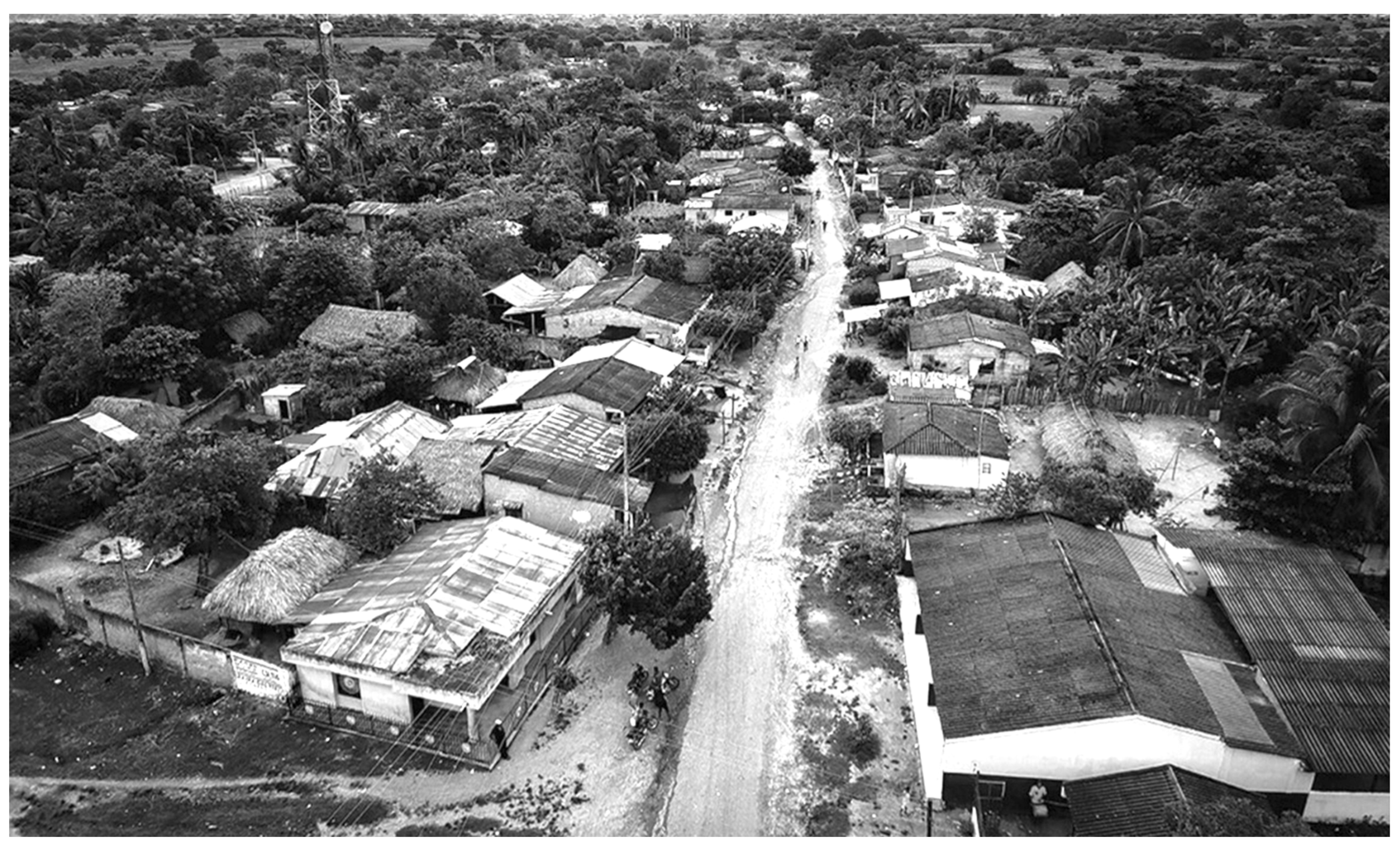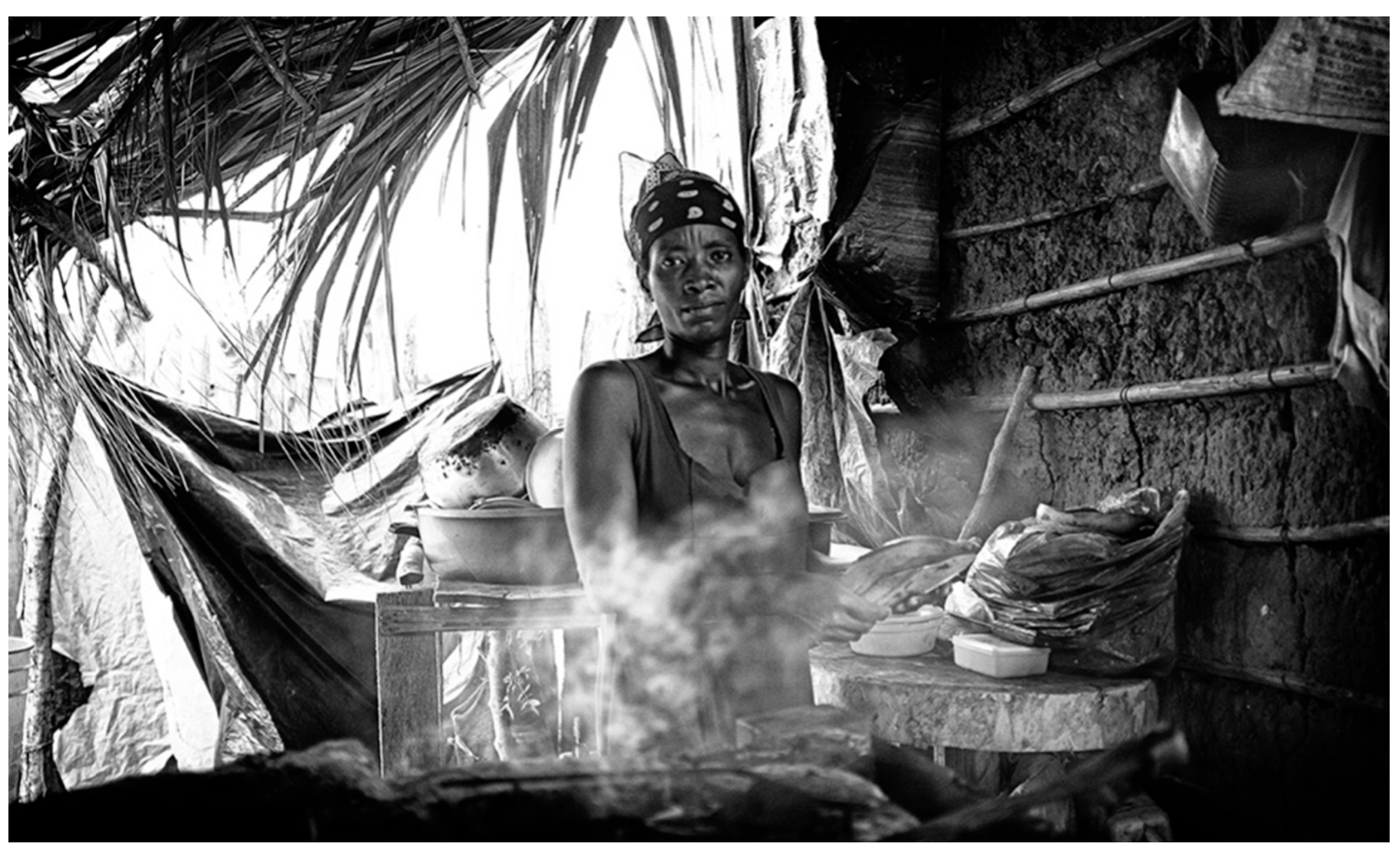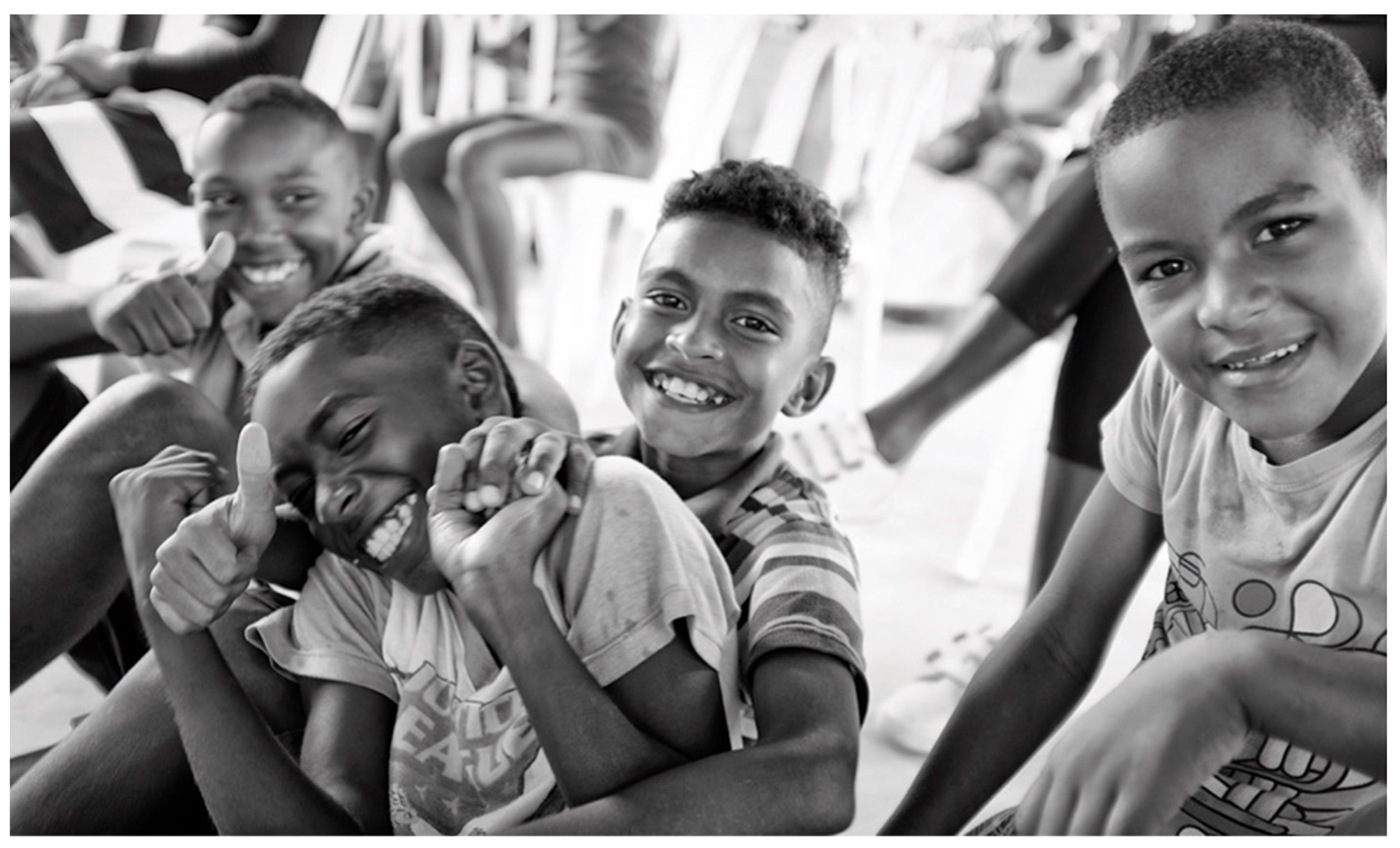1. Introduction
In the early 21st century, rural social movements throughout the Global South face increasingly complex threats to their territories, livelihoods, and cultural identities. In Colombia, particularly in the Caribbean region of the Montes de María, Afro-descendant communities face numerous challenges. They are contending with the lingering effects of armed conflict, the sluggish and uneven fulfillment of the 2016 Peace Agreement, the encroachment of agro-industrial initiatives, and the continued marginalization of their cultural and territorial rights.
The unfulfilled promises of the Peace Agreement in Montes de María highlight the crucial role of our audience in the peace process. The slow implementation of Comprehensive Rural Reform projects, the lack of security, and the persistence of illegal economies are areas where the influence can make a significant difference. Specifically, the insufficient investment in agrarian projects, the persistence of violence and the presence of armed groups, as well as the absence of effective mechanisms for reparations for victims and the protection of their rights, all require attention and action to ensure progress toward lasting peace in the region.
The principal broken promise in Montres de María relates to the Comprehensive Rural Reform (CRR). Despite being one of the pillars of the Peace Agreement, the slow and underinvested implementation of CRR in Montes de María has had a profound impact on local communities. The projects have failed to fully integrate the region, reduce poverty, and promote equal opportunities for its inhabitants. In relation to reparations and Victims’ Rights, the inadequate implementation of reparation measures and the recognition of victims’ rights have left communities feeling neglected. They have reiterated the need for a more effective approach to victim care and reparations. In addition to this, there have been numerous breaches in addressing Political and Ethnic Participation. The ethnic chapter of the Agreement, which seeks to ensure the participation, autonomy, and right to prior consultation and free and informed consent of ethnic communities, has been poorly implemented. Finally, there is still a primary concern with security and state presence: Communities have denounced the lack of security guarantees and the persistence of violence, along with the increase in drug trafficking and the presence of illegal economies in the region, despite the agreement with the FARC-EP.
Afro-Colombian communities encounter systemic hurdles in accessing land and attaining territorial recognition, which are often exacerbated by violence and forced displacement. Reports indicate that these challenges are especially severe for Afro-descendant individuals, who experience intersecting forms of racial, gender, and territorial injustice.
Despite the hopes pinned on the Peace Agreement, research shows that 80% of its commitments regarding ethno-racial equity have yet to be honored. For instance, the National Land Agency has not effectively managed the Land Fund or responded to more than 1500 requests from ethnic communities. In Montes de María, only two collective land titles have been issued since 2017, highlighting the continuing neglect of Afro-Caribbean territorial claims [
1].
Historically marginalized and displaced, these communities are now leading the charge in rethinking development through the lens of territorial justice, cultural resilience, and ethnodevelopment. Their fight extends beyond mere land and housing rights; it encompasses dignity, memory, and the aspiration to craft a life that respects both their heritage and their future. Recent studies emphasize that this concept of “territory” for Afro-Colombian people extends life beyond legal definitions, referring to a living space, a site of resistance, and a vessel for collective memory [
2,
3].
This article investigates how Afro-Colombian rural communities are reclaiming their right to remain in their territories through the social act of building homes. By synthesizing four years of participatory research with the Ma-Majarí Community Council of El Níspero, this work examines how traditional Afro-Caribbean building practices serve not only as expressions of identity but also as means of political resistance and re-peasantization.
The analysis incorporates visual ethnography, architectural surveys, and community-led initiatives such as the creation of the La Victoria
1 neighborhood (
Figure 1), which showcases the strength found in self-construction and collective agency. By weaving together insights from ethnodevelopment theory, intercultural governance, and spatial justice, this article enriches broader discussions around rural social movements, land disputes, and the role of architecture in fostering cultural identity and territorial autonomy.
A complementary study conducted in María La Baja further underscores this perspective, revealing that Afro-Caribbean housing traditions—like the bohío, the patio, and the symbolism of a tree in front of one’s house—are more than mere architectural features. They act as vital infrastructures that uphold oral traditions, strengthen community bonds, and promote cultural continuity. This dynamic spatiality intertwines the personal with the collective, bridging the material with the intangible.
By analyzing the intersection of architecture, memory, and post-conflict reconstruction, this work argues that Afro-rural housing is not merely a shelter but a strategic space for the reproduction of life, the transmission of knowledge, and the defense of territory. In a context where state-led development often imposes homogenizing models, these communities are building alternative futures from below—futures rooted in dignity, diversity, and the right to remain.
This exploration ultimately sheds light on the transformative power of housing and community in the context of social movements, underscoring the resilience and agency of Afro-Colombian communities in their ongoing fight for justice and recognition.
2. Theoretical Framework
The struggle of Afro-Colombian rural communities to defend their territories and cultural identities in the post-conflict era requires a rethinking of development, governance, and spatial justice. This article draws on a set of interrelated theoretical perspectives—ethnodevelopment, territoriality, re-peasantization, and the social construction of habitat—to frame the analysis of Afro-rural housing as a political and cultural strategy of resistance.
2.1. Ethnodevelopment and Decolonial Perspectives
Ethnodevelopment, as articulated by Escobar [
4,
5] and CEPAL [
6], challenges the homogenizing logic of state-led development by centering the cultural, territorial, and epistemic specificities of ethnic communities. In the Colombian Caribbean, this approach becomes particularly relevant in the wake of the 2016 Peace Agreement, whose implementation has largely failed to address the differentiated needs of Afro-descendant populations [
7].
Ethnodevelopment emerges as a strategic framework for social inclusion, challenging homogenizing development models. It centers cultural diversity, equity, and the right to remain in the territory with dignity. Life Plans (Planes de Vida)
2 play a crucial role in articulating community-led visions of autonomy and sustainability. They represent a counter-narrative to extractive development models, offering a roadmap for territorial justice (
Figure 2).
Rather than passive recipients of aid, these communities assert their right to define development on their terms—through Life Plans that articulate visions of autonomy, sustainability, and cultural continuity. As Huertas [
8] argues, these plans are not merely technical instruments but expressions of collective identity and political imagination. They represent a counter-narrative to extractive development models, offering a roadmap for territorial justice.
The concept of ethnodevelopment has been widely debated in the academic literature. Authors such as Arturo Escobar and Catherine Walsh have proposed a decolonial vision of development, in which Afro-descendant communities are not only subjects of rights but also active agents in shaping their territories and ways of life [
5,
9]. This perspective diverges from traditional development models that prioritize infrastructure over culture, proposing an alternative logic based on autonomy, ancestry, and oral tradition as fundamental pillars of the Afro-descendant habitat.
The research deepens this critique by highlighting how housing policies often ignore the intangible heritage embedded in Afro-Caribbean spatial practices. It calls for a shift from functionalist models to an architecture of recognition—one that values oral tradition, collective memory, and symbolic spatiality as central to development.
Thinking on an architecture of recognition can be a collective empowerment movement, uniting culturally interested housing initiatives in an ethical and political proposal. This proposal redefines the right to housing, emphasizing diversity, participation, and dignity. Unlike traditional functionalist approaches, which prioritize technical efficiency, standardization, and quantitative coverage, this architectural paradigm advocates for housing design to emerge from dialogue with communities. It recognizes their knowledge, practices, and territorialities, transforming housing from a technical object into a situated cultural expression. The design and construction process becomes a pedagogical, symbolic, and collectively empowering act. This perspective reimagines the roles of the architect, the planner, and the policymaker, turning them into cultural mediators, territorial facilitators, and guarantors of cultural rights. It necessitates a rethinking of public policies, incorporating the cultural dimension as a structuring axis of housing. It advocates participatory methodologies that integrate tools such as affective mapping, artisanal prototyping, and interdisciplinary co-creation. The architecture of recognition could be a call to action, a way to build homes that house not only rooms but also memories, rituals, and possible futures.
2.2. Territory as a Living Space
The concept of territory in this context transcends legal or cartographic definitions. Following Restrepo [
2], Wade [
10], and Sassen [
3], territory is understood as a living space—a socio-cultural and ecological system shaped by ancestral practices, oral traditions, and collective memory. This perspective aligns with the notion of “ethnic-territoriality,” which emphasizes the inseparability of land, identity, and governance. In Afro-Caribbean communities, territory is not merely a resource but a condition for existence, a space of belonging, and a site of resistance.
The ancestral territories of populations in the Colombian Caribbean are at risk and are in the process of developing new territorial identities, social structures, and norms. These developments must emerge from a collaborative project involving the people living in these areas [
11]. To politically recognize Afro communities as an ethnic group, it is essential to consider their traditional practices, harmonious relationship with nature, collective ownership of the land, and economic rationalities [
2]. Individuals and local communities must adopt a fresh interpretation of this process of ethnicization, often referred to as “ethnic-territorial.” From this perspective, the concept of territory as a living space includes all the natural and social conditions that support and foster the existence and development of Afro communities as an ethnic group with distinct traditions and culture. This collective effort is vital for the protection of these territories.
Wade [
10] explores the economic, political, and social exclusion of groups of African descent by critically analyzing the representation of blackness in relation to rural, regionally specific, and ancestral indigenous territories. He argues that governance has never been as stable as intended; it requires not only recognizing that the map nor the land is not the territory but also understanding the functions and governance processes linked to the territory [
12]. Sassen [
3] emphasizes the disparity between the concept of territory and its legal representation by the state. Territory cannot simply be limited to local, national, or state definitions to grant autonomy. Furthermore, the rise in violence and the threats posed by new national and international neoliberal models during the post-conflict period have given rise to anti-liberal policies and alternative paths for peace [
13]. As researchers, students, policymakers, and academics, it is crucial that we understand and address these issues.
2.3. Re-Peasantization and the Social Construction of Habitat
The re-peasantization framework [
14,
15] provides a lens for understanding how rural communities are reclaiming autonomy through localized, culturally grounded practices. In the Afro-Colombian Caribbean, this process materializes the construction of housing systems that reflect ancestral knowledge and communal values. Drawing on Montoya and Solarte [
16] and Ortiz [
17], the concept of the “social construction of habitat” emphasizes how architecture serves as a medium for cultural expression, intergenerational transmission, and political affirmation.
This framework is further enriched by the concept of “living ancestrality,” which posits that traditional housing is not a relic of the past, but a dynamic system of knowledge and practice that adapts to contemporary challenges. The bohío, the patio
3, and the street are not just spatial elements—they are symbolic and social infrastructures that sustain community life and cultural continuity. Afro-rural housing systems are evolving, incorporating new materials while preserving ancestral spatial logic. This “living ancestrality” enables communities to adapt to contemporary challenges while maintaining cultural coherence.
Traditional housing typologies (
Figure 3 and
Figure 4)—such as bahareque
4, bohíos, and palm-roofed dwellings—serve not only as shelters but as spatial translations of intangible heritage (
Figure 5). These structures embody ancestral knowledge, oral traditions, and collective identity, forming a grammar of resistance and belonging.
This research also engages with critiques of neoliberal multiculturalism [
9,
18], which often reduce ethnic recognition to symbolic inclusion without structural transformation. Ethno-education and housing policies, for instance, have frequently failed to incorporate the epistemologies and spatial practices of Afro-descendant communities. Instead, this work advocates for an intercultural approach that recognizes the legitimacy of alternative knowledge systems and supports the co-production of space and policy.
3. Methodology
This study is grounded in a Participatory Action Research (PAR) approach, developed in collaboration with the Ma-Majarí Community Council of El Níspero, located in the Montes de María region of the Colombian Caribbean. The research was conducted between 2018 and 2020 and unfolded in two main phases: the formulation of a community Life Plan and the development of a strategic diagnostic and intervention framework for the social construction of habitat.
PHASE I: Methodological Construction (18 months)
- 1.
Networking
Development of the research route
Definition of the methodological framework
Definition of the theoretical framework
Project presentation by the research teams
Systemisation of documentation and initiatives
- 2.
Presentation of the project
Context and life plan documentation
Trip to Cartagena: Montes de María, Ma-Majarí del Níspero Community
Presentation of the project and research route to the communities.
Photo-essay
Systemisation of the communal proposals
- 3.
Methodological design
Methodology proposal
Trip to Cartagena: Montes de María, Ma-Majarí del Níspero Community
Identification of variables in the construction of a habitational system
Conclusions and logical framework analysis
Presentation of results
PHASE II: Strategic diagnostics and intervention framework (18 months)
- 4.
Social strategic diagnosis
Documentation of regional development plans and community plans
Trip to Cartagena: Montes de María, Ma-Majarí del Níspero Community
Construction of the social diagnosis
Territorial characterisation and inter-zone proposals
Systemisation of the social diagnoses
- 5.
Technical strategic diagnosis
Definition of a collective logical framework
Meeting with research teams
Participatory construction of the technical diagnosis
Delimitation of the community habitational system
Systemisation of the technical diagnostics
- 6.
Scenarios and strategic addressing
Documentation, analysis and identification of variables and actors
Trip to Cartagena: Montes de María, Ma-Majarí del Níspero Community
Collective construction of scenarios and imaginaries
Conclusions and preparation of publication
Presentation and results
PAR was selected as the methodological foundation due to its emphasis on co-creation of knowledge, community empowerment, and long-term engagement. Rather than treating community members as subjects of study, PAR positions them as co-researchers, actively involved in defining problems, generating data, and shaping solutions [
19]. This approach was particularly appropriate for a context marked by historical marginalization, armed conflict, and institutional neglect. This methodology fostered trust, intergenerational dialogue, and long-term community empowerment.
Therefore, the research is framed within a Participatory Action Research (PAR) approach, following the proposals of Paulo Freire and Orlando Fals Borda [
20,
21]. This methodology enables the collective construction of knowledge, where the community is not the object of study, but rather the active subject in defining its own needs and solutions. During the fieldwork in El Níspero, workshops with Kuagros
5, interviews with knowledgeable people, community surveys, and social mapping exercises were conducted. These tools enabled the identification of cultural values associated with ancestral dwellings and their role in transmitting collective memory.
The methodology draws on the Latin American tradition of PAR emphasizing the dialectical relationship between theory and practice. It also incorporates the notion of “territorial pedagogies” [
22], which frames research as a process of collective learning and cultural affirmation. The goal is not only to produce academic knowledge but to strengthen the community’s capacity for self-governance, resilience, and territorial defense [
23].
During the fieldwork in El Níspero, a diverse set of tools was employed:
Workshops with Kuagros (traditional youth organizations) to facilitate intergenerational dialogue (
Figure 6).
Semi-structured interviews with elders, midwives, and knowers to document oral histories and cultural practices.
Social mapping and cartography to visualize territorial dynamics and reclaim spatial memory.
Photo-essays and drone-based surveys to capture architectural typologies and everyday life.
SWOT analysis and role-playing exercises to construct future scenarios and strategic frameworks.
Photography was employed as a tool of complicity and storytelling, capturing the rhythms of daily life, the textures of built space, and the emotional landscape of Afro-Caribbean identity. The visual essay challenges dominant representations and affirms the vitality of Afro-rural culture. Visual ethnography, particularly in its critical form, empowers marginalized communities to co-produce knowledge and challenge dominant narratives through visual storytelling [
24]. This approach enhances accessibility and fosters policy-relevant insights by centering participant identities and lived experiences.
The first phase related to Life Plans focused on building trust and establishing a shared research agenda. Activities included community assemblies, workshops, interviews with elders and youth, and the documentation of oral histories and spatial practices. A photo-essay and drone-based mapping were used to visualize housing typologies and territorial dynamics. These tools facilitated the identification of key variables in the construction of Afro-rural habitat systems.
The second phase involved co-designing a strategic framework for territorial planning. This strategy involved the development of a collective logical framework, the participatory construction of technical diagnostics, and the creation of future scenarios through role-playing, SWOT analysis, and mobile visualization techniques. The process emphasized the articulation of community priorities with broader policy instruments such as the “Planes de Desarrollo con Enfoque Territorial (PDET)”
6 [
25].
Throughout the research, special attention was given to the role of Kuagros as facilitators of intergenerational dialogue and cultural transmission. The methodology also incorporated social cartography as a political tool, enabling the community to redefine its territory not only in spatial terms but also through memory, identity, and resistance. The study underscores the role of youth in shaping future identity narratives. While many express aspirations to migrate, the built environment—through patios, bohíos, and communal spaces—offers a framework for rootedness and renewal, bridging generational divides.
Ultimately, the methodology aimed not only to produce academic knowledge but to strengthen the community’s capacity for self-governance, cultural affirmation, and territorial defense. The Life Plan that emerged from this process is both a legal instrument and a living document, reflecting the community’s aspirations for a dignified and autonomous future.
4. Case Study: The Ma-Majarí Community of El Níspero
The Ma-Majarí Community Council of El Níspero (
Figure 7), located in the Montes de María region of the Colombian Caribbean, offers a compelling case of Afro-descendant territorial resilience and cultural affirmation. With historical roots in the Palenque of Angola, this community embodies a legacy of resistance dating back to the 16th and 17th centuries, when enslaved Africans established maroon settlements to defend their freedom and rebuild their lives.
Today, El Níspero remains a site of struggle and creativity, where architecture, memory, and identity converge in the construction of a dignified Afro-rural habitat. The community’s housing stock includes a range of typologies, from traditional “bahareque” dwellings with palm-thatched roofs to more recent constructions using concrete blocks and zinc sheets. Despite material differences, these homes share a common spatial logic: the articulation of the street, the patio, and the “bohío” (the semi-open kitchen space) as interconnected zones of domestic, social, and symbolic life. The street is not merely a circulation space but a site of play, exchange, and surveillance; the patio is a space of cultivation, conversation, and ritual; and the bohío is the heart of the home, where fire, food, and storytelling converge. These elements form a spatial grammar that links the domestic with the collective, the ancestral with the contemporary. The homes are not isolated units but nodes in a network of memory, identity, and resistance.
This case study draws on a four-year participatory process that combined ethnographic observation, community workshops, and visual documentation, including photography, drone mapping, and architectural surveys. The research focused on the spatial practices and housing typologies of the community, revealing how built forms serve as repositories of ancestral knowledge and as instruments of cultural continuity.
The photo-essay documents these spaces not only as architectural forms but as lived environments. Images of children playing in the street, elders weaving palm leaves, and families gathering around the fire illustrate the vitality of Afro-rural life and its embeddedness in the territory. These visual narratives challenge dominant representations of rural blackness as marginal or static, instead portraying a dynamic and evolving cultural landscape. The spatial organization of El Níspero—articulated through the street, patio, and house—reflects a rhythmic temporality that sustains social interaction and cultural continuity. These spaces are relational, protective, and central to the community’s everyday life.
One of the most significant developments in recent years has been the creation of the La Victoria neighborhood. This community-led housing initiative emerged from land acquisition and self-construction. In just three months, families built their own homes on newly acquired land, demonstrating both the urgency of housing needs and the capacity for collective action. This initiative exemplifies the community’s commitment to remaining in the territory and shaping its future on its terms. It also highlights the limitations of state-led housing programs, which often fail to incorporate cultural specificity and community agency. In contrast, the Ma-Majarí community’s approach reflects a vision of development rooted in autonomy, dignity, and environmental sustainability.
The sealing of communal wells and the lack of infrastructure symbolize broader patterns of exclusion [
26]. In contrast, the self-built neighborhood of La Victoria exemplifies the community’s capacity for autonomous development and spatial justice. The La Victoria neighborhood represents a paradigmatic example of community self-management (
Figure 8). After the Community Council acquired two hectares of land, families built their homes in a collective process that reaffirms the importance of territorial roots. The houses, built with wattle and daub, wood, and palm, incorporate ancestral techniques and are arranged around patios and huts that function as gathering spaces. The wood-burning stove, for example, not only serves a practical purpose but also symbolizes the heart of the home and the soul of the family.
The case of El Níspero underscores the importance of recognizing housing as not only a technical or economic issue, but also a cultural and political one. The community’s spatial practices reflect a profound connection to its ancestry, a commitment to intergenerational transmission, and a vision of development grounded in autonomy and dignity. As such, El Níspero offers valuable insights into the broader processes of re-peasantization, ethnodevelopment, and territorial justice in post-conflict Colombia.
The case of El Níspero also reveals the tensions between tradition and modernity. While some families have adopted industrial materials such as concrete and zinc, others continue to build with bahareque and palm, preserving ancestral techniques and spatial configurations. This coexistence of old and new reflects a dynamic process of cultural negotiation, where identity is continuously redefined through architecture and everyday practice.
We can compare the El Níspero experience with other ethnodevelopment processes in the Caribbean and the Colombian Pacific. In San Basilio de Palenque
7, for example, traditional housing also articulates memory, oral tradition, and resistance. However, while progress has been made in collective land titling in the Pacific, challenges related to land access and institutional recognition persist in the Caribbean. This comparison underscores the necessity for tailored policies that acknowledge the diverse contexts and historical trajectories of Afro-descendant communities.
Finally, the community’s spatial practices challenge dominant representations of rural blackness as marginal or static. Through photography, mapping, and storytelling, El Níspero emerges as a vibrant and evolving cultural landscape. In this place, the past is honored, the present is lived with dignity, and the future is imagined collectively.
This research is linked to the photo essay and documentary “Los Colores del Níspero,” which was created as a culmination of the entire research process. Research conducted with communities often concludes with scientific approaches and products that do not resonate with the interests of the communities involved, resulting in relative impact on the scientific community and limited impact on the communities themselves. By reflecting on the importance of delivering a production that the community can embrace from a decolonial perspective, we were able to synthesize and explain the entire process to the community.
This documentary received an award at the FAMMA International Festival, and the community was honored with the prize. The research sparked a debate about the impact of the research processes, as well as an in-depth study of Afro-rural housing typologies. It is essential to highlight the significance of this entire process as a dynamic and changing proposal.
Currently, a project is underway to develop a House of Culture in collaboration with the community, with completion planned for the end of 2025 and construction to begin in 2026. This House of Culture, referred to as “The House That Can Do Everything,” (La Casa Que Todo lo Puede) is a participatory design and construction initiative aimed at prototyping rural housing for Afro-descendants. On a practical level, it will establish a replicable construction model focused on promoting homeownership.
The initial prototype will be delivered as a House of Culture, managed by the Ma-majari Ethnic Cultural Corporation of Angola in collaboration with the El Níspero Community Council. Through research on life plans and collaboration in developing the community council’s current Ethnodevelopment Plan, we have evolved a diverse process of community empowerment, with a commitment to ongoing support and co-research.
This research process, which currently represents eight years of proposals and shared work, has no similar experiences to compare it with. The project began by developing the proposal with the community and has progressed alongside it to this day, at its own pace. We look forward to celebrating a meaningful conclusion at “La Casa que Todo lo Puede”.
5. Discussion and Conclusions
The findings of this study underscore the critical role of Afro-Colombian Caribbean communities in reimagining development from the ground up. In a context marked by historical marginalization, armed conflict, and institutional neglect, the Ma-Majarí Community Council
8 of El Níspero has demonstrated that the social construction of habitat is not merely a technical or architectural endeavor—it is a profoundly political and cultural process.
Through the participatory formulation of Life Plans, these communities have articulated alternative visions of development rooted in autonomy, cultural identity, and territorial justice. The use of traditional housing typologies, such as bahareque and bohíos, reflects a commitment to ancestral knowledge and environmental sustainability. These spatial practices are not relics of the past but living expressions of Afro-rural identity and resistance.
The case of El Níspero also highlights the limitations of state-led development models, which often fail to account for cultural specificity and community agency. Despite the promises of the 2016 Peace Agreement, implementation has been uneven, and many Afro-descendant communities continue to be excluded from meaningful participation in territorial planning. The persistence of land inequality, the slow pace of collective titling, and the lack of institutional support for ethnodevelopment initiatives highlight the structural barriers that continue to undermine peacebuilding efforts.
However, the community’s response—grounded in participatory action research, intergenerational dialogue, and cultural affirmation—offers a powerful counter-narrative. It demonstrates that peace and development must be built from below, through processes that recognize and strengthen local knowledge systems, governance structures, and spatial imaginaries. The construction of habitat in Afro-Colombian communities is inseparable from the construction of identity, memory, and future.
This research contributes to broader debates on post-conflict reconstruction, rural social movements, and the politics of space. It calls for a redefinition of housing and habitat as tools for social transformation, not just as products of policy or market forces. It also highlights the need for interdisciplinary and intercultural approaches that bridge architecture, anthropology, and political ecology.
In conclusion, the Ma-Majarí community’s experience confirms that the right to remain in the territory is inextricably linked to the right to envision and construct a future. Their struggle is not only for land or housing but for dignity, memory, and the possibility of a life that honors both ancestry and aspiration. As Colombia continues to navigate its post-conflict transition, these voices and visions must be at the center of any meaningful path toward territorial justice.
Afro-rural housing can be understood as a symbolic, social, and political system that articulates collective identity. Its preservation requires not only adequate public policies but also the strengthening of community organizations and intercultural training processes. The case of El Níspero demonstrates that it is possible to build a dignified habitat based on ancestry, participation, and resistance. In this sense, we propose moving toward an architecture of recognition that engages with local knowledge and contributes to territorial justice in the Colombian Caribbean.
Life Plans are not only governance tools but also pedagogical instruments that enable communities to define their futures. They call for a renewed social contract based on inclusion, dignity, and cultural freedom. However, we ought to be conscious that without political will and methodological support, these plans risk becoming symbolic gestures rather than transformative strategies.
As Colombia continues to navigate its post-conflict transition, the voices and visions of communities like El Níspero must be at the center of any meaningful path toward territorial justice. Housing is not only a right—it is a story, a memory, and a future (
Figure 9).
